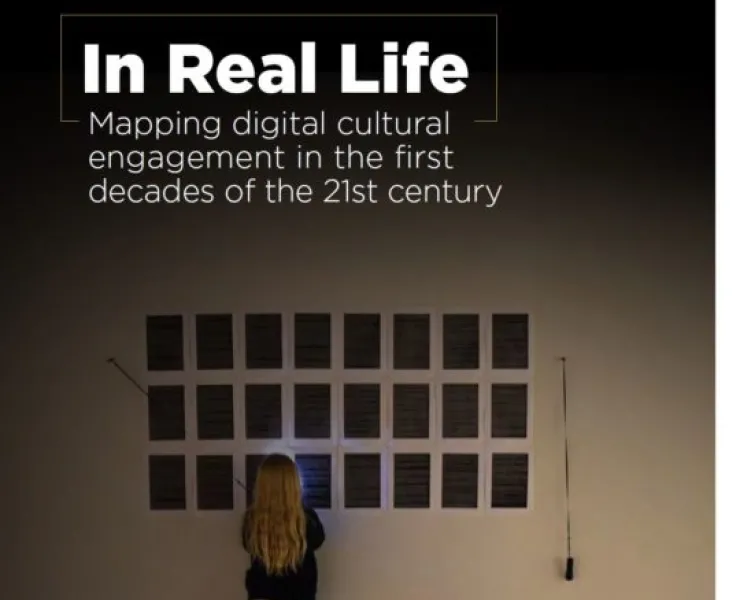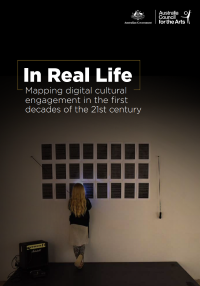Breadcrumb
Summary
In Real Life: Mapping digital cultural engagement in the first decades of the 21st century explores arts and cultural participation in an environment increasingly influenced by digital technology.
Produced through a partnership between the Australia Council for the Arts and National Arts Council Singapore, the report provides insights and guidance for the cultural and creative industries as they grapple with the implications of digital transformation.
The research is based on a wide-ranging literature review including scholarly articles, books, industry reports and media articles.
In Real Life adds to the Australia Council’s growing body of work on digital engagement, including the Audience Outlook Monitor research which tracked audience sentiment and behaviour through the COVID-19 pandemic, as well as previous research on professional artists, arts participation, blockchain and music exports.
The report paves the way for the Australia Council’s broader research and capacity building in digital cultural engagement.
Key findings
- We live in a hybrid world where increasing use of mobile technology means that digital elements are embedded in everyday life and cultural participation.
- More people are creatively participating, and it is increasingly difficult to distinguish ‘artist’ and ‘audience’. This is because of the rise of participatory digital technologies over the past two decades and, more recently, a small number of integrated digital platforms that permeate everyday life via mobile technologies.
- Audience expectations are changing. Audiences expect to be able to insert themselves into the story of an artwork, and to have access to multiple lines of communication – with performers as well as other audience members and participants.
- For many people, the live experience is no longer just about ‘in-person’ attendance. It can mean experiencing art simultaneously with others and watching events unfold in real time.
- Digital access is unevenly distributed and does not automatically mean increased participation for everybody. These issues will be addressed more fully by the Australia Council in work currently underway on access and inclusion in the digital sphere.
- Audience expectations now also include significant access to arts and culture for minimal cost. Digital technology has made it harder for copyright holders to exert control over artworks, but has also led to an expansion of options for sharing and remixing artistic content. New business models and systems of copyright are required to secure renumeration for artists and creatives.
- We should be wary of merely replacing traditional gatekeepers with new, digital ones. Platforms claim to be impartial, a position bolstered by their successful use of the term ‘platform’ as opposed to ‘publisher’ or ‘broadcaster’. But platforms shape the content that is produced by determining what kind of participation is allowed or encouraged. And, they privilege some content over others through the sorting mechanisms of algorithms.
- Many of the digital trends highlighted by COVID-19 adaptation were already occurring and have simply been accelerated by the pandemic.







